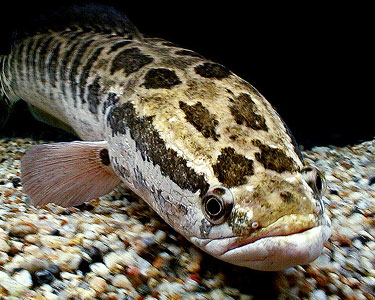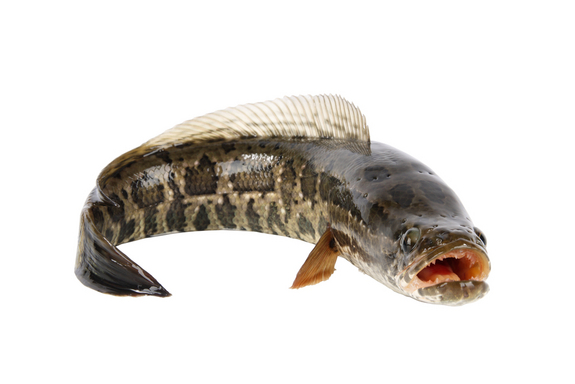
Channa argus
FAMILY
Channidae
TAXONOMY
Ophicephalus argus Cantor, 1842, Chusan Island, China.
OTHER COMMON NAMES
German: Amur-Schlangenkopf; Chinese: Hey yu; Japanese:
Kamuruchi; Russian: Zmeegolov.
PHYSICAL CHARACTERISTICS
Length 44.1 in (112 cm); a large snakehead. Has relatively
small scales (LL=61–72), no scales on the underside of the jaw,
large canine-like teeth on the upper and lower jaws; two horizontal
rows of 9–15 irregular dark brown blotches that sometimes
coalesce, and brownish pectoral fins with a black mark at
the base.
DISTRIBUTION
Central China (Yangtze to Luan River basins) including Korea
to the Amur River basin, southern Russia; introduced and established
in Japan, the United States, and republics in the former
Soviet Union adjacent to Caspian Sea.
HABITAT
Lakes, swamps, marshes, reservoirs, and rivers in lowland slowmoving
to stagnant temperate waters.
BEHAVIOR
Known to burrow into the mud and hibernate when the water
becomes very cold, has not been reported to move over land.
FEEDING ECOLOGY AND DIET
Feeds on fishes, frogs, prawns, worms, crayfishes, and juvenile
water birds.
REPRODUCTIVE BIOLOGY
Spawns usually in early morning from spring to summer, Male
and female build donut-shaped nest about 39.4 in (100 cm) in
diameter using aquatic plant debris. Female deposits an average
of 7,300 eggs 0.06–0.08 in (0.15–0.2 cm) in diameter; incubation
takes about 45 hours at 77°F (25°C). Guarded and cared
for by the parents, newly hatched fry are all black, and leave
the nest when they reach 0.03 in (0.8 cm), at which size the
body has become yellowish.
CONSERVATION STATUS
Not threatened; common in almost all areas within its
DISTRIBUTION
.
SIGNIFICANCE TO HUMANS
One of the most popular food fishes in China, where it is believed
to be beneficial for helping in postpartum recovery.
Other popular Animals
Photo Gallery of - Northern snakehead





 Animalia Life
Animalia Life